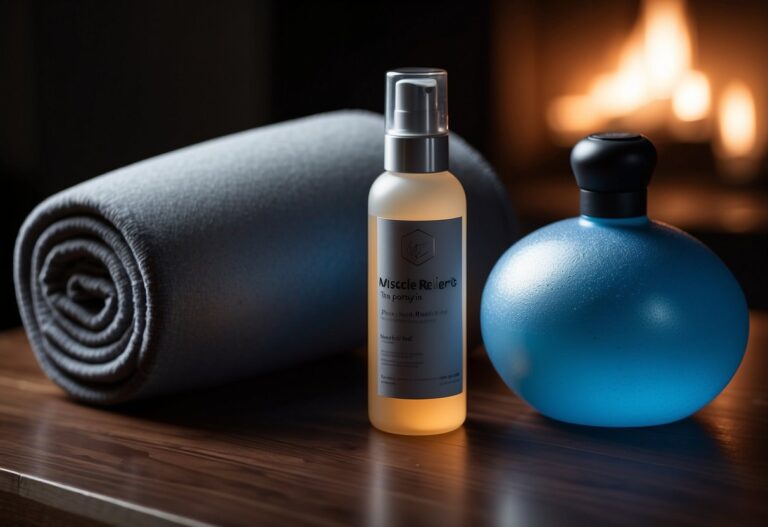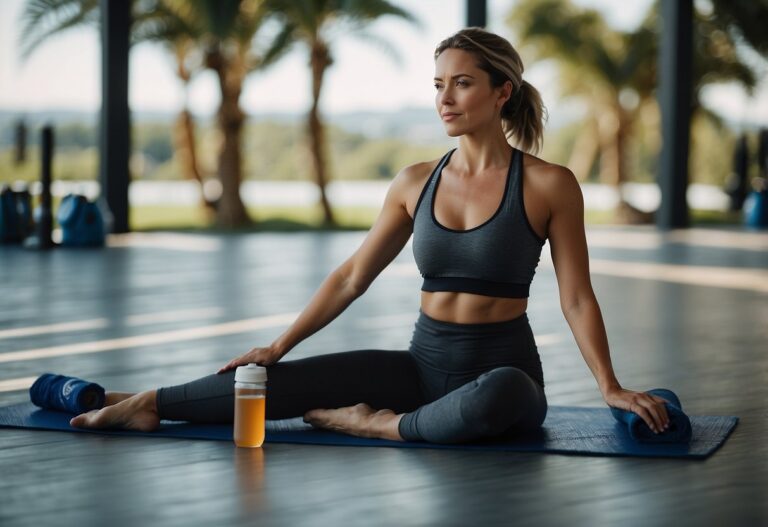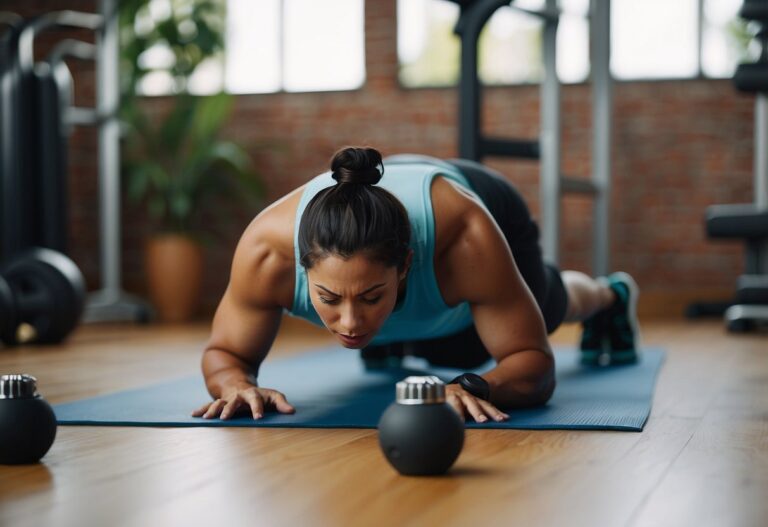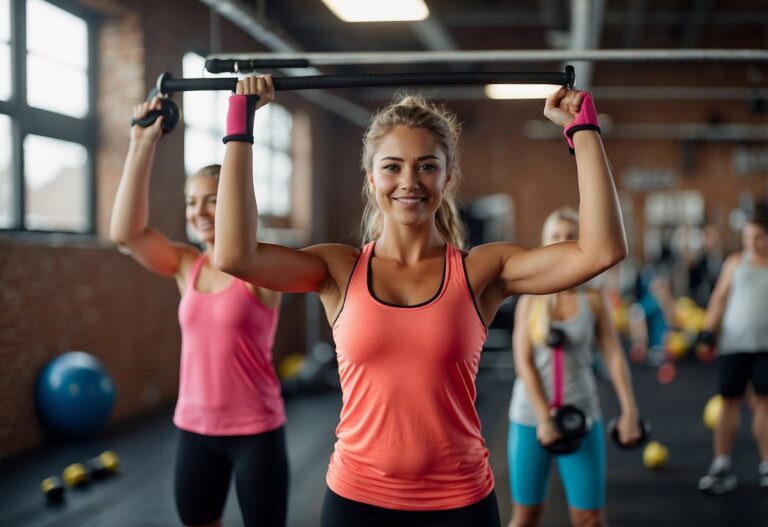We all lead busy lives, and finding time for a full workout can sometimes seem impossible. Quick workout tips can be your go-to solution, ensuring you stay fit without needing hours at the gym. These tips are perfect for fitting fitness into a hectic schedule, whether you’re at home, in the office, or on the move.

How can you maximise your workout efficiency in just a few minutes a day? By incorporating fundamental exercises and practical strategies, you can achieve significant fitness benefits without spending too much time. This article will discuss various tips that can help you stay active and healthy, no matter how packed your day might be.
Start with a Dynamic Warm-Up
Before diving into your workout, always start with a dynamic warm-up. This helps get your muscles ready and prevents injuries.
A good warm-up only takes a few minutes. For example, a knee grab can really get your heart rate up and your muscles primed.
Try exercises like Vinyasa Flow to open up your body. Another great move is Inchworms, which stretch and strengthen your muscles.
Incorporate HIIT Sessions
High-Intensity Interval Training (HIIT) is a great way to boost your fitness quickly. In just 20 to 30 minutes, you can get an intense workout that burns a lot of calories.
You can start simple with exercises like sprints. For example, try an 8-second sprint followed by 12 seconds of jogging. Repeat this for 10-20 minutes.
Interval training can also include activities like the dumbbell floor press. Perform one set of 10 repetitions without resting between exercises to keep your heart rate up.
Incorporating HIIT into your exercise routine can keep things exciting and effective.
Use Bodyweight Exercises
You don’t need fancy equipment to get a great workout. Bodyweight exercises are a fantastic way to build strength and improve fitness right at home. They are convenient and effective for all fitness levels.
Consider starting with push-ups to target your upper body. They are simple but effective for improving strength. Begin with a few and increase gradually.
Squats are another excellent choice. They work your legs and glutes. You can do them anywhere, and they don’t require any equipment.
For core strength, try planks. Hold a plank position for as long as you can. It’s a great way to build a strong and stable core.
Mix these exercises into a routine. Try doing 10 push-ups, 15 squats, and a 30-second plank. Repeat this circuit a few times for a balanced workout.
Jumping Jacks for Cardio
Add some jumping jacks for a cardio boost. They increase your heart rate and help burn calories quickly.
Lunges for Balance
Lunges work your legs and help improve balance. Try doing 10 lunges on each leg. Be mindful of your form to avoid injury.
Finish With Stretching
Always finish with some stretching to improve flexibility and prevent soreness. Stretching helps your muscles recover and makes you more flexible over time.
Try Tabata Training
If you’re short on time, Tabata training is a great way to get a quick, intense workout. It’s a type of high-intensity interval training (HIIT) that can be done in as little as 4 minutes.
Think about doing 20 seconds of intense exercise, followed by 10 seconds of rest. Repeat this for eight rounds. It sounds simple, but it’s a real challenge!
A beginner might start with exercises like squat jumps or burpees. More advanced workouts can include combinations, such as squat jumps followed by pike jumps.
You’ll find plenty of Tabata workout videos online to guide you. Give it a go, and see how it fits into your fitness routine!
Focus on Compound Movements
When you’re short on time, compound movements are your best friend. They work multiple muscle groups at once, giving you more bang for your buck.
Take the push-up, for example. It works your chest, triceps, and shoulders in one go. Plus, it’s great for your core.
Squats are another top pick. They target your legs, glutes, and even your back. If you only do one leg exercise, make it the squat.
Remember, compound exercises like these not only build strength but also burn more calories. So, for efficient workouts, stick to compound movements. If you need more guidance, check out this comprehensive workout guide.
Include Core Strengthening
When you think about fitness, your core is crucial. A strong core supports nearly everything you do, from lifting heavy items to maintaining good posture.
Incorporate exercises that target your core, like planks and crunches. Planks are great because they engage multiple muscle groups at once.
Try to add side planks and bird dogs to mix things up. They help you build stability and strength. Look for routines like the 20-Minute Core Workout for effective home exercises.
Doing core exercises regularly, even just for a few minutes, can make a big difference. Your balance and overall fitness will improve.
Practice Yoga for Flexibility
Yoga is a fantastic way to improve your flexibility. Whether you’re just starting out or you’ve been practising for years, there’s always room for improvement.
You don’t need to spend hours to see benefits. A 10-minute yoga routine for flexibility can make a big difference. Short, focused sessions can stretch your muscles and help you move more freely.
Try simple poses like the forward fold. This pose, where you bend at the hips and reach for your toes, can really stretch your hamstrings and spine. Another good one is called Warrior 2, which opens up your hips and chest.
Consistency is key. Doing yoga regularly, even in short bursts, can gradually increase your flexibility.
Stretches can help prevent injuries and improve your posture, making daily activities easier and more comfortable. If you stick with it, you’ll notice changes in how your body feels and moves.
Feel free to mix up your routine. There are lots of beginner yoga workouts that keep things interesting and target different areas of your body.
Utilise Resistance Bands
Resistance bands can be a great addition to your workout routine. They’re portable and versatile, making them easy to use anywhere.
To start, stand on the band with feet shoulder-width apart. Hold the band at shoulder height and perform a squat. The band adds extra resistance, making the exercise more challenging.
You can also use bands for upper body workouts. Try anchoring one end of the band under your foot and perform a bicep curl. This targets your biceps without needing any heavy equipment.
For core exercises, attach the band to a sturdy object and pull it across your body to work your obliques. This helps improve your balance and stability.
Integrate Plyometrics
Adding plyometrics to your workout can boost your power and agility. Plyometric exercises involve explosive movements, which can help improve your athletic performance. You can start with simple exercises like pop squats, which strengthen your quads and glutes.
Another exercise is the plyometric push-up. This involves pushing yourself off the ground with enough force to lift your hands. It’s great for building upper body strength.
For a full-body challenge, try jumping onto a plyo box. This move enhances your leg strength and coordination. Learn more about plyometric exercises and start integrating them into your routine.
Track Your Progress
Keeping an eye on your progress can make your fitness journey more motivating and effective.
Take progress photos to see how your body changes over time. Snap a picture every week or month, and compare them side by side. It’s a great visual reminder of your hard work.
Notice how your clothes fit. Pay attention if things get looser or if you need to buy smaller sizes. It’s a subtle but powerful sign of improvement.
Use a fitness app to log your workouts. They make it easy to track all your exercises, reps, and sets.
Lastly, keep a workout journal. Write down the date, your bodyweight, and the exercises you did. This helps you spot patterns and adjust your routine as needed.
Tracking your progress keeps you motivated and helps you see how far you’ve come!
The Benefits of Quick Workouts
Quick workouts offer significant advantages, including improving your health and saving you time. They make it easier to fit exercise into a busy schedule without compromising the benefits.
Health Improvements
Short workouts can greatly improve your health. Activities like intermittent exercises boost cardiovascular health, strengthen muscles, and enhance flexibility. Even just 10 minutes a day can lower your risk of chronic diseases such as hypertension and diabetes.
Besides physical health, mental well-being also benefits. Brief, regular exercise can reduce stress, improve mood, and increase energy levels. It’s easier to stay motivated and stick to a routine when workouts aren’t overwhelming. You might find that even a small commitment leads to feeling healthier and happier each day.
Time Efficiency
One of the biggest advantages of quick workouts is how they fit into your busy life. It’s easier to commit to a short 10-minute session compared to a longer 60-minute one. This makes it more likely that you’ll stick to your fitness goals. Plus, these sessions can be squeezed into your day without needing a lot of planning.
You can get creative with your schedules, such as doing exercises during breaks or after work. This flexibility makes it simpler to stay active. Quick workouts offer the benefit of consistent exercise without taking up too much of your valuable time.
When you can achieve so much in just 10 minutes, it’s hard to find an excuse not to exercise. Whether you’re a beginner or experienced, short workouts make fitness accessible and sustainable.
How to Maximise Your Quick Workout
To make the most of your quick workout, it’s essential to focus on high-intensity methods and ensure you prepare your body properly.
High-Intensity Interval Training (HIIT)
HIIT is a technique where you alternate between short bursts of intense activity and fixed periods of less intense activity or rest. This method not only saves time but also maximises your workout efficiency. You can utilise HIIT with almost any exercise, including running, cycling, or bodyweight exercises.
For example, you might sprint for 30 seconds and walk for 90 seconds, repeating this cycle for 10-20 minutes. This can help burn more calories and improve cardiovascular fitness compared to steady-state cardio.
Key Benefits of HIIT:
- Time Efficiency: Achieves more in less time.
- Enhanced Calorie Burn: Continues to burn calories post-workout.
- Cardiovascular Improvements: Boosts heart health and endurance.
HIIT can be intense, so listen to your body and adjust intervals as needed.
Proper Warm-Up and Cool-Down
Warming up before a quick workout is crucial to prevent injuries and optimise performance. A proper warm-up increases blood flow to your muscles and loosens your joints. This can involve dynamic stretches like leg swings, arm circles, and lunges.
Follow a warm-up with a gentle cool-down to help reduce muscle stiffness and aid in recovery. This might include light jogging or walking, followed by static stretching to improve flexibility.
Steps for Effective Warm-Up and Cool-Down:
Warm-Up (5-10 minutes):
- Start with light cardio (e.g., jogging, jumping jacks)
- Incorporate dynamic stretches targeting all major muscle groups
Cool-Down (5-10 minutes):
- Light cardio to gradually lower heart rate
- Static stretching to ease muscle tension
By committing to these practices, you help ensure your body is ready for an effective and safe workout, even when time is tight.







